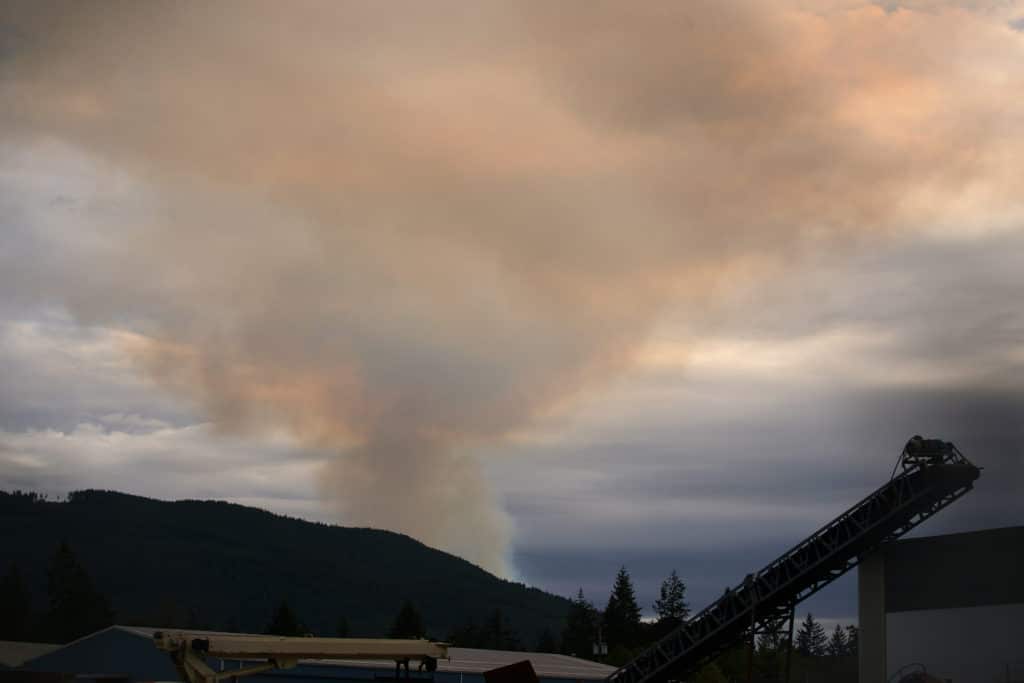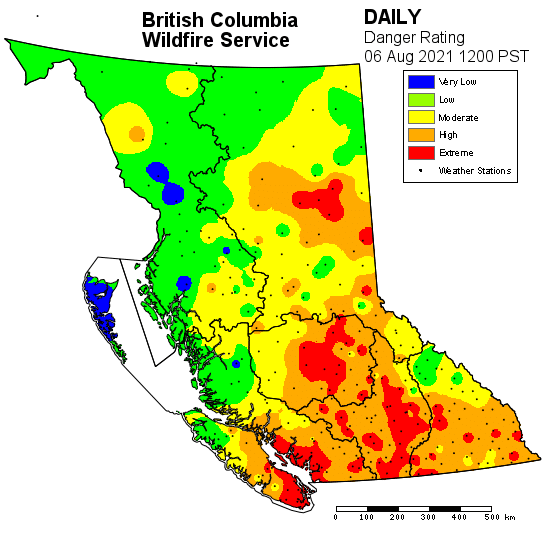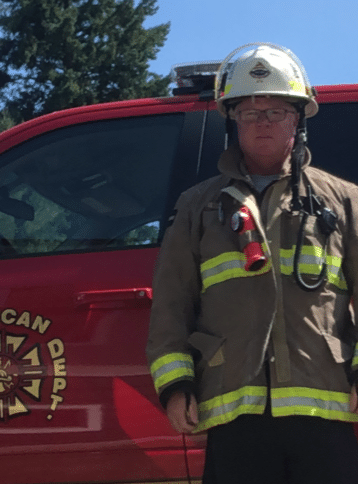
In the early hours of Friday, Aug. 6, wildfire crews responded to a 10-hectare, out-of-control fire on the north slope of Mount Prevost, in the Copper Canyon area of the Chemainus River Valley. It grew through the day to 32 hectares. The Cowichan Valley Regional District has issued an evacuation alert for a single property on Mount Prevost Road.
Just two days before, crews responded to a separate, human-caused fire in the same area. Last month, a house fire on Maple Bay Road spread to nearby bush. Fortunately, a quick response by five fire halls and BC Wildfire Service extinguished the blaze. July also saw a structure fire at an industrial building in Duncan and a house fire that claimed the life of Nathan Haslam.
In the Interior, raging wildfires have ripped through towns, forced evacuations and led to a provincial state of emergency. The current fire danger rating in the Cowichan region is extreme, due to high temperatures and little rain. Residents and local fire departments are on high alert.
Related story: Former Sahtlam fire chief still paying it forward 40 years after his house burned down
“We’re nervously watching every time the wind starts blowing,” says Wray Watson, deputy fire chief for the Duncan Fire Department. “Our crews are prepared, we have our equipment ready and we’re just holding our breath that nothing happens around here.”
Deputy Chief Watson, who has been with the fire department for 34 years, spoke with The Discourse about how all residents can prevent, prepare for and respond to fires that may threaten local homes and communities.
Wildfire safety at home and away
In late June, B.C. announced a provincial campfire ban through October 15. The ban isn’t just about campfires; it includes a prohibition on fireworks, chimineas, tiki torches, burn barrels and other outdoor sources of fire that elevate wildfire risk.

Wildfires, unattended campfires and open burning violations can be reported to BC Wildfire service by calling 1-800-663-5555, or *5555 on a cell phone.
According to Watson as well as the FireSmart Begins at Home manual from the BC Wildfire Service, it’s also important to make sure there aren’t any combustible materials near your home. Residents can reduce the risk by clearing brush, pruning trees and cleaning out gutters.
The manual includes detailed information on how to assess properties for wildfire safety and respond to potential issues. It includes recommendations for fire-resistant vegetation and building materials.
Ideally, much of this is done before the fire season starts, Watson says. Now that the weather has heated up, it’s important to keep any plants near the home well-watered to reduce their potential to fuel a fire.
Fire safety in the home
According to Watson, there are many causes of fires that ignite inside homes, ranging from electrical problems to smoking materials. One cause that perhaps not everyone is aware of is the improper disposal of painting supplies. Watson explains that because oily rags generate their own heat source, they are prone to spontaneous combustion and thus must be disposed of properly in an airtight container.

It’s essential to have multiple smoke alarms, one on every floor and one outside every bedroom, he says. “It’s imperative; they’re your early warning system,” Watson says. “They absolutely save lives. When lives are lost in homes, it’s [often] because they don’t have a working smoke alarm.”
He adds that while fire extinguishers are also an important item to have in every home, he notes that with so many combustibles in homes these days, fires burn so hot so fast that a regular five-pound fire extinguisher likely won’t be able to control it.
When there is a fire in your home, Watson says that it is critical to get out quickly, call 911 and make sure everyone is accounted for.
He adds that if there is time, turn on the sprinklers and close windows and doors on your way out since when open they can add more fuel to a fire. “But you don’t want to spend time inside a home that you might become entrapped in,” Watson says. “Fires spread quickly. Smoke can overtake you before you know it.”
Once outside, people should wait in the driveway if it’s safe to do so, Watson says. This is so that when the firefighters arrive, you can inform them that everybody is safe and let them know where the fire is and what you think is burning.
Be prepared for evacuation
Whether escaping a house fire or approaching wildfire, it’s important to have a go bag ready with emergency supplies, Watson says. And consider a plan to gather important documents, valuables and personal mementos, in case there is time to save them. He explains that fire victims always wish they had been able to save the things that are irreplaceable.
“You can buy the new fridge, you can buy the new Chesterfield,” Watson says. “The family photos, the mementos, heirlooms are the things that you want to put in storage containers and have them ready.”
He adds that pet owners should have a pet carrier that has enough room for good air circulation as well as water and pet food. “Have that all ready to go so you just place your [pet] in your carrier and go,” he says.
Another tip is not to leave your gas tank too close to empty. “You want to have enough fuel to get where you want to go,” Watson says.
It’s also a good idea to have a plan to activate outdoor sprinklers in case of a fire, he says. Creating a moisture barrier between the forested area and your home will provide some degree of protection in the event of a wildfire, Watson explains.
He also recommends signing up for Alertable, an emergency notification service app that can send alerts to your phone in an emergency. “You don’t want to be heading in the wrong direction, heading towards the fire or an area that’s going to be overrun with traffic,” Watson explains. “The emergency alert system is great because it will tell you where to go.”

As of Aug. 6, there were 60 evacuation orders and 107 evacuation alerts in the province. Watson says that people under an evacuation alert should start packing up emergency supplies in preparation for the possibility it becomes an evacuation order. And of course, everyone should comply with an evacuation order.
“In these extreme conditions and on a windy day, a fire can travel faster than you can run, so leaving sooner than later is the best bet,” Watson says. “Don’t leave it to the very last minute because that’s when tragedy happens — you get overtaken by the fire. Attempting to stay and fight it on your own is not the best decision.” [end]
Editor’s note, Aug. 10 2021: This article has been updated to correct an error in the spelling of deputy chief Wray Watson’s first name.



